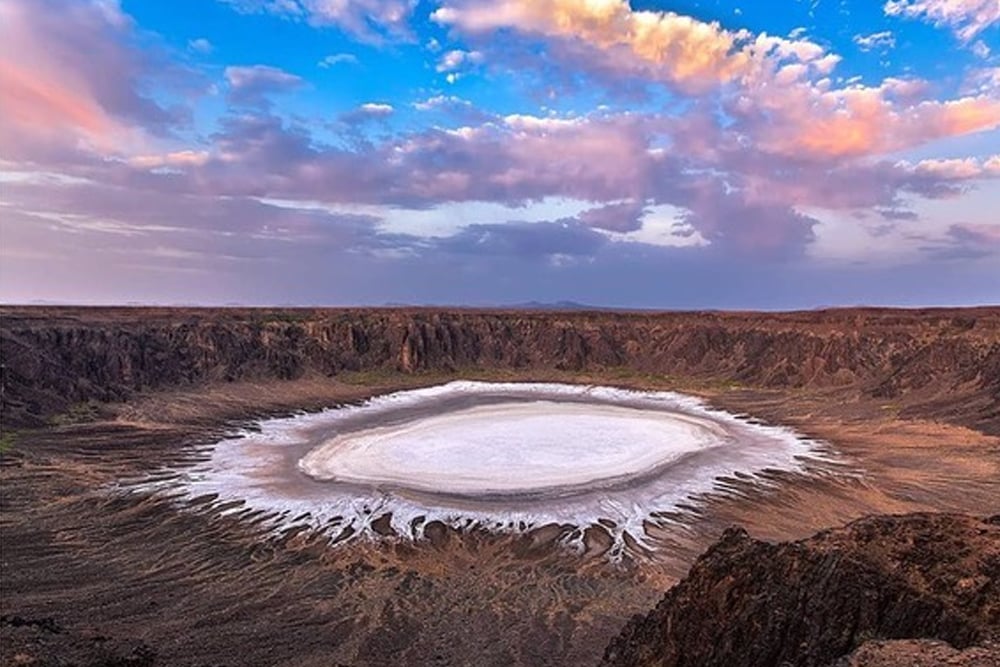Al Wahbah Crater
- The huge Al Wahba crater, one of Saudi Arabia’s most impressive natural wonders, is a large hollow with an opaque lake at its centre that is 4 km wide and 250 m deep. The crater, which is carved into the western border of the Hafer Kishb basalt plateau, can be reached by car in about four hours from Jeddah or by travelling about 250 km and two hours north of Taif. For those who choose to climb it, the lunar-like landscape offers a nearly unearthly experience, complete with breathtaking vistas of the desert from the crater’s rim.
- The crater stands out as an incredible outlier from its surroundings. It is a magnificent pockmark (crater-like depression) that is about 1.2 miles across and 820 feet deep. While the entire crater is still dry and desolate, there is some greenery in the form of palm palms and plants surrounding it.
- It was once believed that the crater was the result of a meteorite striking the planet, but geological studies in the 1960s showed that Al Wahbah was actually a maar crater. When groundwater comes into contact with heated lava, volcanic eruptions that result in these shallow hollows take place.
- Take the paved Wahbah crater road that leads to the place to see; a 4×4 vehicle is not required. Stop in the parking lot. You may approach the visitor centre from here, which has a small museum and a few covered picnicking areas.
- The 45-minute climb down and the 90-minute hike back up are much more difficult in the summer, when temperatures here can reach 50°C, therefore it’s advisable to undertake the trip early in the day or late at night and in the cooler winter months.
Things to do
- The visitor centre features an exhibit that discusses the crater’s composition and structure. To learn more about the crater’s geology, you can go to the museum.
- Some visitors also choose walking around the crater’s rim, which can take up to three hours to complete.
- Enjoy either the sunrise or the sunset, whichever you like. Dawn and dusk are both breathtakingly lovely.
- A short trail with crudely carved steps leads to the crater’s base if you want to have a closer look. Reaching the base and returning up take roughly an hour and two hours, respectively. The walk is lengthy, and it’s also very hot and dry outside. It is advised that tourists who want to follow the descent bring food and water with them and stop whenever they feel like it. Boots for hiking are also advised.
- There are designated viewing areas that provide a clear view of the crater and its surrounds. These locations are perfect and cosy for taking a seat and enjoying a leisurely dinner while taking in the surrounding natural splendour.

